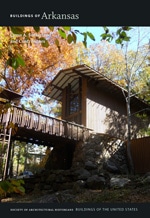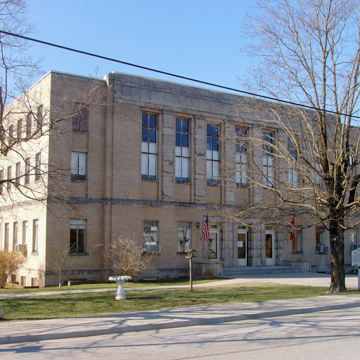Huntsville was laid out and designated the county seat in 1839, and this courthouse is the county’s sixth, replacing ones that either burned or were too dilapidated to repair. The courthouse, the first of the six not constructed on the town square, is a three-story buff brick and limestone structure in a severe Moderne design constructed with WPA funding. It is five bays at the center with slightly lower recessed one-bay wings. The doors are recessed in a surround of limestone decorated with a scroll pattern along the top, and the interior has marble floors and wainscoting. Shelton, a Fayetteville engineer, oversaw the construction and renovation of several WPA-funded buildings in the state; architect Nelson had his office in Fort Smith.
You are here
Madison County Courthouse
If SAH Archipedia has been useful to you, please consider supporting it.
SAH Archipedia tells the story of the United States through its buildings, landscapes, and cities. This freely available resource empowers the public with authoritative knowledge that deepens their understanding and appreciation of the built environment. But the Society of Architectural Historians, which created SAH Archipedia with University of Virginia Press, needs your support to maintain the high-caliber research, writing, photography, cartography, editing, design, and programming that make SAH Archipedia a trusted online resource available to all who value the history of place, heritage tourism, and learning.


